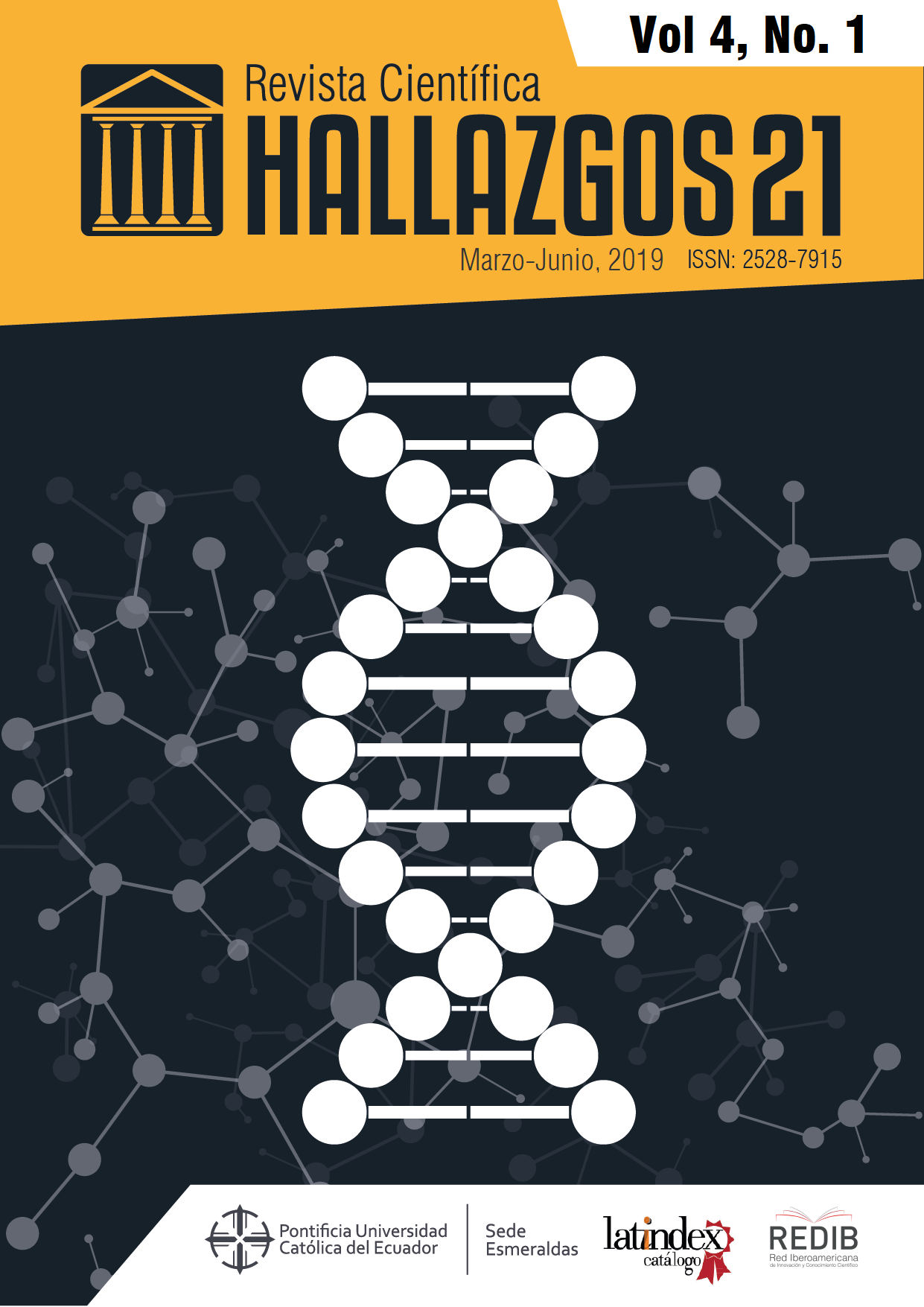Pulmonary Fibrosis as a Sequela of Tuberculosis and Diaphragmatic Hernia
DOI:
https://doi.org/10.69890/hallazgos21.v4i1.333Keywords:
Pulmonary fibrosis; diaphragm; diaphragmatic hernia; RS 14; interstitial lung disease.Abstract
Background: A clinical case of pulmonary fibrosis as a sequela to tuberculosis in a patient with diaphragmatic hernia diagnosed in adulthood is presented; an exceptional condition of this stage of life. Literature reports few cases outside of childhood.
Objective: To demonstrate that tuberculosis continues to be a scourge for health.
Method: Descriptive and observational study by reviewing the clinical history and questioning the patient. As variables of the study, the following were conceptualized:Diaphragm: It is defined as an odd muscle that constitutes, by itself, the diaphragmatic region; It has the shape of a dome and its center is an aponeurosis from which its muscular fascicles are born, which are inserted in the lower margin of the thorax and posteriorly, thanks to tendinous pillars, in the lumbar vertebrae (Muñoz & Vásquez, 2017) .Pulmonary Fibrosis: It is a condition where the deep tissue of the lungs is intertwined. This causes the tissue to become thickened and hard.Diaphragmatic Hernia: It is defined as the passage of abdominal contents to the thoracic cavity through a defect in the diaphragm (Tapias, Tapias, & Tapias, 2009).RS + 14: Respiratory symptoms with more than fourteen days.Interstitial Pulmonary Disease: It is a very heterogeneous group of entities that predominantly affect the alveolar-interstitial structures, the respiratory tract and the pulmonary vasculature and that present common manifestations in the clinic, radiology and respiratory function (Jareño, De Granda, & Arias, 2008).
Conclusions: It is necessary to expand rapid diagnostic procedures and perform AFB sputum (acid-fast bacilli) to all patients with respiratory symptoms other than 14 days (SR + 14) for early diagnosis and appropriate treatment.
References
Johkoh, T. (2014). Nonspecific interstitial pneumonia and usual interstitial pneumonia: is differentiation possible by high-resolution computed tomography? Seminars in Ultrasound CT and MR, 35(1), 24 - 28. doi:http://dx.doi.org/10.1053/j.sult.2013.10.004
Kikuchi, S., Nishizaki, M., Kurida, S., Kagawa, S., & Fujiwara, T. (2016). A case of right-sided Bochdalek hernia incidentally diagnosed in a gastric cancer patient. BioMed Central Surgery, 16(1), 34. doi:10.1186/s12893-016-0145-2
King, T. (2012). Enfermedades Pulmonares Intersticiales. En D. Longo, A. Fauci, D. Kasper, S. Hauser, L. Jameson, & J. Loscalzo, Harrison: Principios de Medicina Interna, 2160 - 2169. México: Mc Graw Hill.
Llanos-Tejada, F. (2010). Alteraciones espirométricas en pacientes con secuela de tuberculosis. Revista Medica Herediana, 21(2), 77 - 82. Recuperado de http://www.scielo.org.pe/scielo.php?script=sci_arttext&pid=S1018-130X2010000200005&lng=es&tlng=es
Mediavilla García, M., & Zurita Alonso, B. (2016). Fundación Académia de Ciénces Médiques I de la Salut de Catalunya I de Balears. Recuperado de http://www.academia.cat/files/425-9951-document/MailenZurita5515Mar16.pdf
Muñoz, R., & Vásquez, B. (2017). Diafragma: Trayectoria Histórica del Término y de sus Descripciones Anatómica y Funcional. International Journal of Morphology, 35(4), 1614 - 1615. Recuperado de https://scielo.conicyt.cl/scielo.php?script=sci_arttext&pid=S0717-95022017000401614
Raghu, G. (2009). Neumopatías Intersticiales. En L. Goldman, & D. Ausiello, Cecil Tratado de Medicina Interna (23ava ed.), Vol. I, 640- 641. Barcelona, España: Elsevier.
Raviglione , M., & O´Brien, R. (2012). Tuberculosis. En D. Longo, A. Fauci, D. Kasper, S. Hauser, L. Jameson, & J. Loscalzo. Harrison. Principios de Medicina Interna, 1340 - 1369. Mexico: McGraw-Hill Interamericana.
Rodríguez-Hermosa, J. I., Pujadas, M., Ruiz , B., Girones , J., Roig , J., Fort, E., . . . &C odina-Cazador, A. (2004). Hernia diafragmática de Bochdalek en el adulto. Revista de Cirugía Española, 76(3), 191 - 194. doi:DOI: 10.1016/S0009-739X(04)78962-9
Romero Marín, M. P., Romero Rondón, S. K., Sánchez Robayo, k. J., Santamaria-Alza, Y., Mendoza Herrera, T., & Grimaldos, F. B. (2016). Secuelas estructurales y funcionales de tuberculosis pulmonar: una revisión de tema. Revista Americana de Medicina Respiratoria. Recuperado de http://www.scielo.org.ar/scielo.php?script=sci_arttext&pid=S1852-236X2016000200007&lng=es&tlng=es
Santamarina, M. G., Rinaldi Crespo, S., Baltazar, A. D., & Volpacchio, M. M. (2009). Rol de la TC multicorte en las hernias diafragmáticas. Ensayo Iconográfico. Revista Argentina de Radiología, 73(4), 421 - 432. Recuperado de https://www.redalyc.org/comocitar.oa?id=382538478006
Serra Valdés, M., Aboy Capote, L., & Díaz Ordoñez, Á. (2015). Tuberculosis Pulmonar. Presentación de caso. Revista Habanera de Ciencias Médicas, 14(6). Recuperado de http://www.revhabanera.sld.cu/index.php/rhab/article/view/965/898
Tapias, L., Tapias-Vargas, L., & Tapias-Vargas, L. F. (2009). Hernias Diafragmáticas: desafío clínico y quirúrgico. Rev Colomb Cir, 24, 95-105.Recuperado de https://www.revistacirugia.org/volumen-24-n2/item/450-hernias-diafragmaticas-desafio-clinico-y-quirurgico.html
Downloads
Published
How to Cite
Issue
Section
License
Los artículos enviados a la Revista Científica Hallazgos21 deberán ser totalmente originales e inéditos.
Los autores son los responsables de los textos y las imágenes incluidas en los artículos y no necesariamente reflejan el pensamiento de la editorial o de la Pontificia Universidad Católica del Ecuador, Sede Esmeraldas (PUCESE).
Los autores disponen cederle a la Revista Científica Hallazgos21 todos los derechos inherentes para la edición, publicación y distribución o divulgación del mismo.
Se autoriza a las revistas firmantes de los acuerdos de Encuentros de Revistas Latinoamericanas para reproducir en parte o totalmente los artículos con la sola mención de la fuente claramente señalada.







